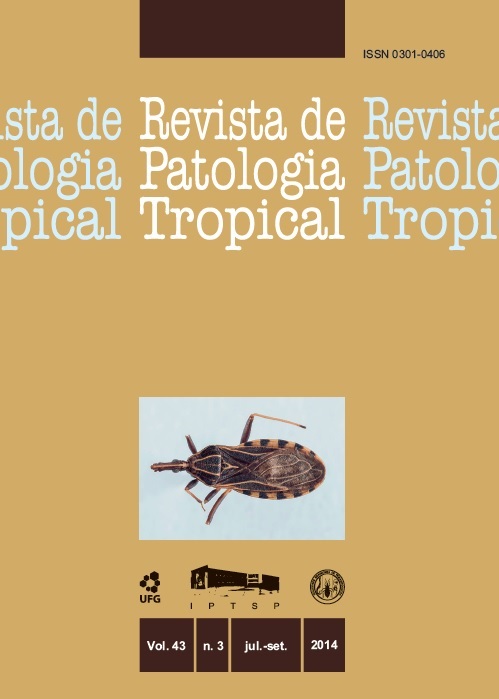LARVICIDAL ACTIVITY OF 3-?-ACETOXYLABDAN-8(17)-13-DIEN-15-OIC ACID ISOLATED FROM THE MEDICINAL PLANT COPAIFERA RETICULATA AGAINST AEDES AEGYPTI EVIDENCED BY CHANGES MORPHOHISTOLOGIC.
DOI:
https://doi.org/10.5216/rpt.v43i3.32214Keywords:
Histology, morfology, dengue, yellow fever, natural products.Abstract
The main mechanism of control of dengue has been through the fight against Aedes aegypti, the transmitter more competent. The fight is primarily to eliminate the potential breeding, health education and use of synthetic insecticides. These insecticides have performance but are highly toxic to vertebrates and the environment. With the emergence of resistance of mosquitoes to them, opens up an opportunity to insecticides of botanical origin. This study looks at the larvicidal activity of a solution of 3-?-acetoxylabdan-8(17)-13-dien-15-óico acid a solution of 3-?-acetoxylabdan-8(17)-13-dien-15-óico acid extracted from the medicinal plant Copaifera reticulata Ducke (Leguminosae) on the 3rd stage larvae of Ae. aegypti. Larvae were subjected to acid 9ppm for up to 24h. Those that reached lethargic state were collected and fixed in 4% in the paraformaldhyde buffer 0.1 M sodium cacodilate pH 7.2, included in resin and the slides stained with hematoxylin-eosin technique and examined by light microscope. This acid caused the death of the Ae. aegypti larvae by cell destruction in the midgut, by the high cytoplasmic vacuolation, cells and nuclei hypertrophy, degeneration of the edge brush, formation vesicular apical with release of cytoplasmic contents of cells, stratification of the epithelium and folds in the peritrophic matrix.
Downloads
Downloads
Published
How to Cite
Issue
Section
License
The manuscript submission must be accompanied by a letter signed by all authors stating the full name and email address, confirming that the material has not been published or is under consideration for publication elsewhere, and agreeing to transfer copyright in all media and formats for Journal of Tropical Pathology. The authors will not be paid for published articles. They are solely responsible for the content of those articles, even if the Editor holds the right to adjust them to the norms of the journal.
The reviewers will not be paid for the peer review process.

